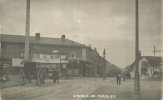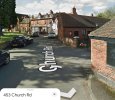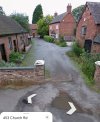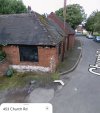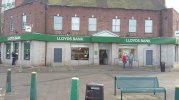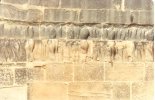They are quite common on the older churches, the ones that the Victorians didn’t modernise. The have been known as devils claw marks.
Some people call then arrow sharpening groves. Edward III’s passed a law in 1363, stating that all able-bodied men aged between 16 and 60 must practice their archery on Sundays and holy days.
One story I do like is they are marks made by lepers. It was thought that consuming flakes of brickwork from sacred chapels would cure you of illness. Apparently, in medieval England leprosy’s became very visible in all communities across England – rural and urban, rich and poor. Higher class to lower class. Even though it was widespread and a big player in our history, we tend not to know too much about it.
I am still of the opinion that people believed that consuming the powdered stone or brickwork from sacred chapels would cure you of illness. It did cross my mind that possibly old arrowheads were used to scrape out the powder.
The people who have been studying there marks are still quite divided as to who, what or why.

